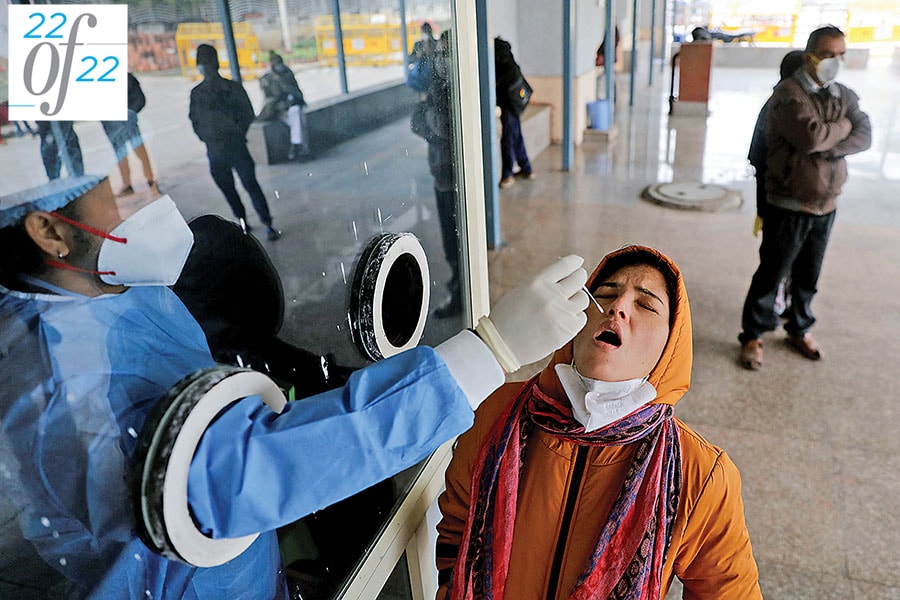
Covid-19: Is the worst behind us? Maybe not
As we let our guards down with regard to precautions and vaccinations, experts call for continued surveillance, data-gathering and preparedness
 A health care worker collects a test swab sample from a woman at a Covid-19 testing centre at a hospital in New Delhi. Experts say that not everyone with symptoms is getting tested, nor are all tests being reported reliably
Image: Anushree Fadnavis / Reuters
A health care worker collects a test swab sample from a woman at a Covid-19 testing centre at a hospital in New Delhi. Experts say that not everyone with symptoms is getting tested, nor are all tests being reported reliably
Image: Anushree Fadnavis / Reuters
The year 2022 has been a tale of contrasts as far as the Covid-19 pandemic is concerned. In January, there was an aggressive push for vaccinations and boosters, and the threat of the Omicron variant loomed large. Twelve months down the line, most people no longer wear masks. Airports and other public places have also eased restrictions.
Experts attribute this to a host of factors, while also saying this is a good time to strengthen our preparedness for possible variants and outbreaks in the future.
The Omicron variant turned out to be relatively milder and less threatening compared to the earlier Delta for a number of reasons, says K Srinath Reddy, past president and honorary distinguished professor at Public Health Foundation of India (PHFI). These include change in the virus behaviour itself, fairly higher level of acquired immunity from exposure to Alpha and Delta variants earlier on, and also, high level of vaccinations.
“Not many people are getting a serious illness now. Even the number of cases with diagnosed infections has come down,” he says, adding that lower hospitalisations and records of severe cases are contributing to relaxations in terms of both masking mandates and vaccinations. “As immunity wanes, people will get infected in larger numbers periodically. But if the same trend continues of the Omicron being relatively milder than its predecessors, then we are unlikely to have the huge burden of severe illness or deaths.”
Check Out: Rewind 2022: Year in Review








